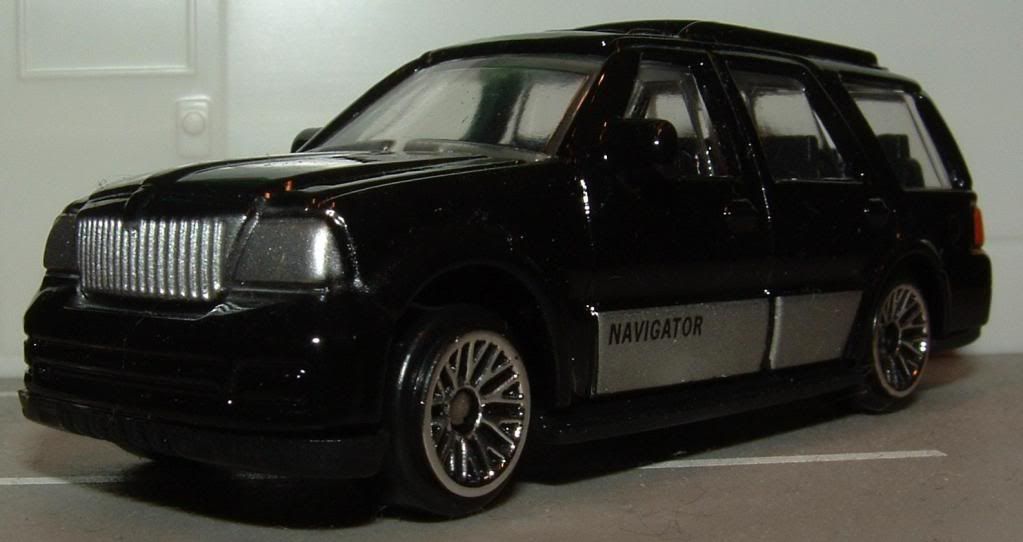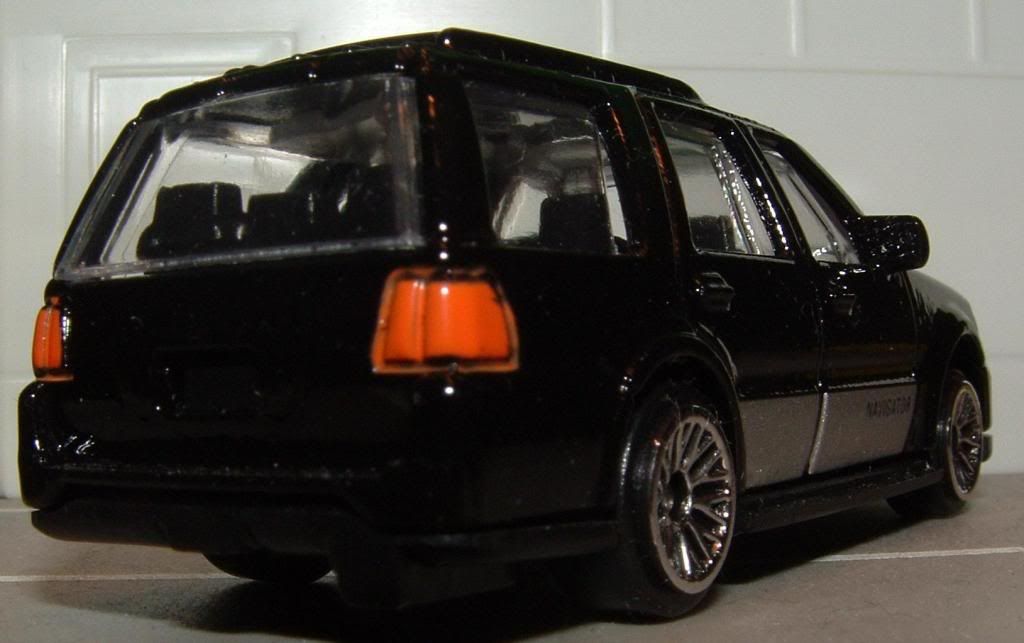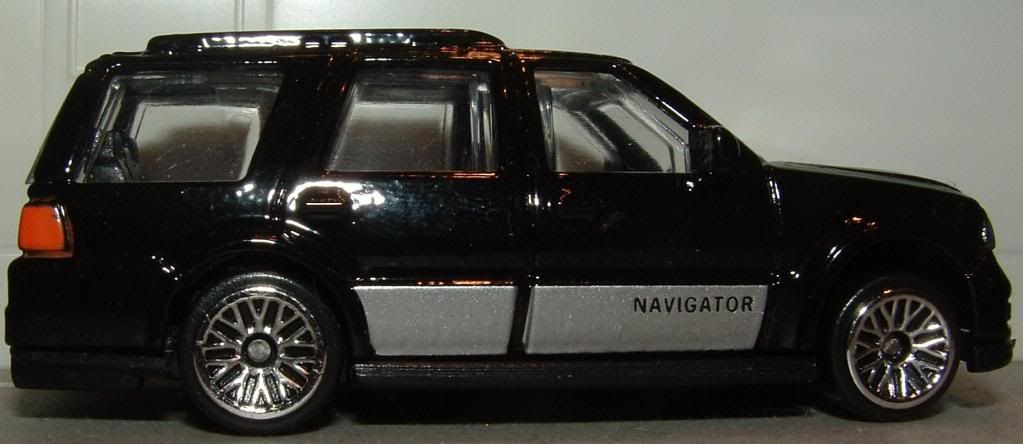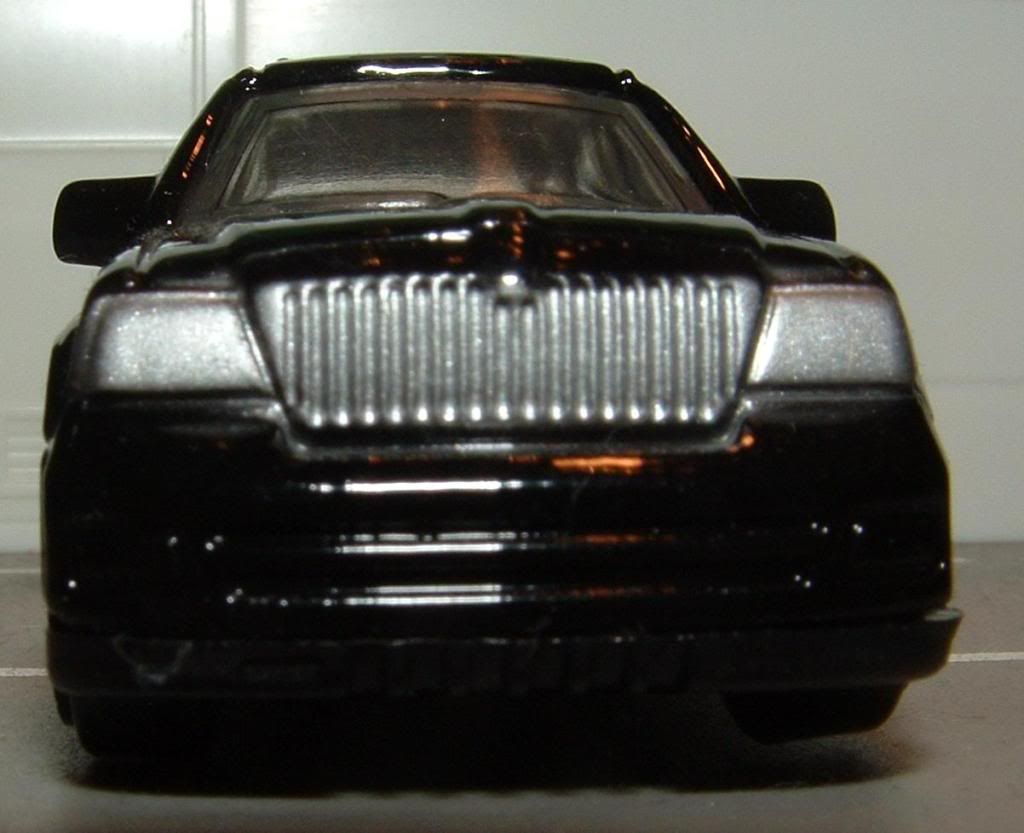
A blog focusing on 1/64 diecast from such popular brands as Hot Wheels, Matchbox, Johnny Lightning, M2 Machines, GreenLight, Tomica, Yat Ming, Majorette, MotorMax, Siku, Corgi, Guisval, Playart, Ertl, Zylmex, Racing Champions, & many more. Swifty's Garage features a daily Car Of The Day and news updates from your favorite brands!
Tuesday, November 16, 2010
SUV Of The Day: November 16, 2010
Today's car of the day is Suntoys' 2006 Lincoln Navigator.
The Lincoln Navigator is a full-size luxury SUV built by the Ford Motor Company for its luxury division, Lincoln. Introduced as a 1998 model, production began May 14, 1997 with sales beginning in August. The Navigator was Lincoln's first SUV as well as its first four-wheel drive capable vehicle. The Navigator shares a platform, mechanical features, and other equipment with the Ford Expedition, which was introduced one year before it. Unique and upscale styling, interior materials, and other features differ the Navigator from the Expedition. Given its platform mate, the Navigator is the largest vehicle Lincoln currently offers, having the greatest cargo capacity and seating for seven to eight people, depending on the model. For 2007, a longer, extended wheelbase version of the Navigator called the Navigator L was introduced, increasing cargo capacity further. Since its introduction, Lincoln has offered only one engine choice at a time in the Navigator in any model year; all are variations of Ford's 5.4 L Modular V8.
In spite of a base manufacturer's suggested retail price of over $42,000 in 1998, the Navigator proved to be popular with nearly 44,000 sold in its first year. Competitors from General Motors like the Cadillac Escalade and the GMC Denali Series quickly followed to cash in on Lincoln's success with the Navigator. Much like the Cadillac Escalade would do, the Navigator found a niche with celebrities and the customized SUV scene.
For more information and pictures of the real car please visit: Lincoln Navigator
Matchbox and Suntoys both paid tribute to the second generation Navigator, but the current generation remains untouched in 1/64, unfortunately. I consider the third generation Navigator to be the best-looking SUV money can buy.
For 2003, a number of changes and improvements were made to the Navigator thanks to a thorough redesign. The Navigator continued to share a platform with the Ford Expedition, which was also redesigned for 2003, but continued to differ from it in terms of styling and various upscale features. The 2003 redesign featured a thoroughly revised exterior, the first since the Navigator's launch, with only the front doors and roof panel unchanged from the previous generation. The new exterior came with things such as a larger chrome waterfall grille, brighter quad-beam headlights with larger housings, revised chrome door handles set in color-keyed bezels, and slightly wider running boards. Inside the Navigator was an all-new instrument panel and dashboard area which, significantly, was not shared with the Expedition. Inspired by the symmetrical, "dual-cockpit" layout of the 1961 Lincoln Continental, the instrument panel and dashboard area was adorned with real walnut burl wood inserts and panels and switches painted with a low-luster satin nickel color. Adding to the upscale interior design further were white LEDs, 120 in all, which provided backlighting for controls and switches. Additionally, to direct attention to the high-quality satin nickel-faced analog clock mounted in the dashboard, an articulating door is present to conceal the radio head unit and optional satellite navigation system when they are not in use.
Highlighting the Navigator's design changes were other new features and options for 2003. Newly available features like Ford's Safety Canopy side curtain airbags and a tire pressure monitoring system improved occupant safety. Convenience was enhanced by the availability of power running boards (an industry first), power-folding third row seats, a power liftgate, and HID headlights (for top end models). The available rear-seat video entertainment system was updated to be DVD-based and all Navigators now came with standard 18x7.5-inch alloy wheels with 18x8-inch chrome wheels available as an option.
Like the redesigned 2003 Expedition, the Navigator benefitted from a reworked chassis, new rack-and-pinion steering, and an all-new independent rear suspension (IRS), which brought better handling and ride comfort. The Navigator continued to benefit from a load-leveling air suspension but it now lowered the vehicle by an inch when stopped in the interest of easing entry and exit. The Navigator's powertrain remained unchanged from 2002, but the 5.4 L DOHC V8 used before was no longer advertised under the InTech name. Due to changes brought with the redesign, the Navigator's base curb weight increased to 5,760 lb (2,610 kg) in two-wheel drive models and nearly 6,000 lb (2,700 kg) in four-wheel drive models. In turn, towing capacity dropped slightly.
Tire-pressure monitoring was made standard for 2004 while Ford's AdvanceTrac, a type of traction control system, with Roll Stability Control was an option. In 2005 the Navigator received a minor facelift with new square-shaped foglights replacing the circular ones used previously. AdvanceTrac with RSC was now standard while HID headlights were available on all models. In the interest of cost effectiveness, the 5.4 L DOHC V8 introduced in the 1999 model year was replaced by the same 5.4 L 3-valve SOHC V8 that's been available in the F-150 since the 2004 model year. Though having a different head design, the new engine offered similar overall output, producing 300 hp (220 kW) at 5000 rpm and 365 lb·ft (495 N·m) of torque at 3750 rpm. On a side note, the new engine was not marketed under the Triton name in the Navigator even though it is mechanically identical to the F-150's engine. The venerable 4R100 4-speed automatic transmission used in earlier Navigators was replaced with a new ZF Friedrichshafen AG-sourced 6-speed automatic transmission. The 2005 Navigator's base curb weight fell to 5,555 lb (2,520 kg) while four-wheel drive models dropped to 5,842 lb (2,650 kg). Towing capacity increased slightly over the previous model year to 8,600 lb (3,900 kg) in two-wheel drive models and 8,300 lb (3,800 kg) in four-wheel drive models. For 2006, an Elite package for the Ultimate trim level was made available, including a DVD-based satellite navigation system with a voice-activated touch screen, THX audio system, rear-seat DVD entertainment system, and HID headlights.
Subscribe to:
Post Comments (Atom)






No comments:
Post a Comment